27 Brilliant Cubicle Decorating Tips That Transform Your Workspace
Your cubicle is more than just a workspace—it’s where you spend a significant portion of your waking hours.
Transforming this standard-issue space into something personal and inspiring can dramatically improve your workday experience.
With some thoughtful decorating, you can create an environment that boosts your productivity and reflects your personality, all while maintaining professional boundaries.
Ready to make your cubicle feel less corporate and more “you”?
Explore these 27 decorating tips that strike the perfect balance between professional and personal.
1: Create a Cohesive Color Scheme

Choose 2-3 complementary colors to unify your cubicle decor.
This simple strategy immediately creates a pulled-together look that stands out from standard office beige.
Carry these colors through your accessories, desk organizers, and wall elements.
Even inexpensive items look intentional when they share a consistent color palette.
This thoughtful approach transforms random decorations into a curated space that feels designed rather than just decorated.
2: Upgrade Your Desk Chair

Replace the standard office chair cover with a stylish slipcover or add a supportive cushion in a fabric you love.
This instantly elevates your seating without requiring permission for new furniture.
Choose washable materials in colors that complement your overall scheme. Add a small lumbar pillow for both comfort and style points.
Since your chair is the largest piece in your cubicle, this simple change makes a significant visual impact while improving your comfort.
3: Install Proper Task Lighting

Supplement harsh overhead fluorescents with a stylish desk lamp that provides warm, adjustable lighting.
This single addition dramatically improves both the atmosphere and functionality of your space.
Choose a lamp with adjustable brightness and a design that complements your aesthetic.
Position it to eliminate screen glare and shadows on your work surface.
The right lighting reduces eye strain while creating a more inviting atmosphere that helps you focus throughout the day.
4: Add Life with Plants

Introduce small, low-maintenance plants that thrive in office conditions.
Succulents, pothos, snake plants, and ZZ plants survive with minimal attention while adding vibrant life to sterile environments.
Choose decorative containers that match your color scheme. Position plants strategically to soften cubicle corners or screen unwanted views.
Beyond aesthetics, plants improve air quality and have been proven to reduce stress and increase productivity in work environments.
5: Create Custom Wall Art
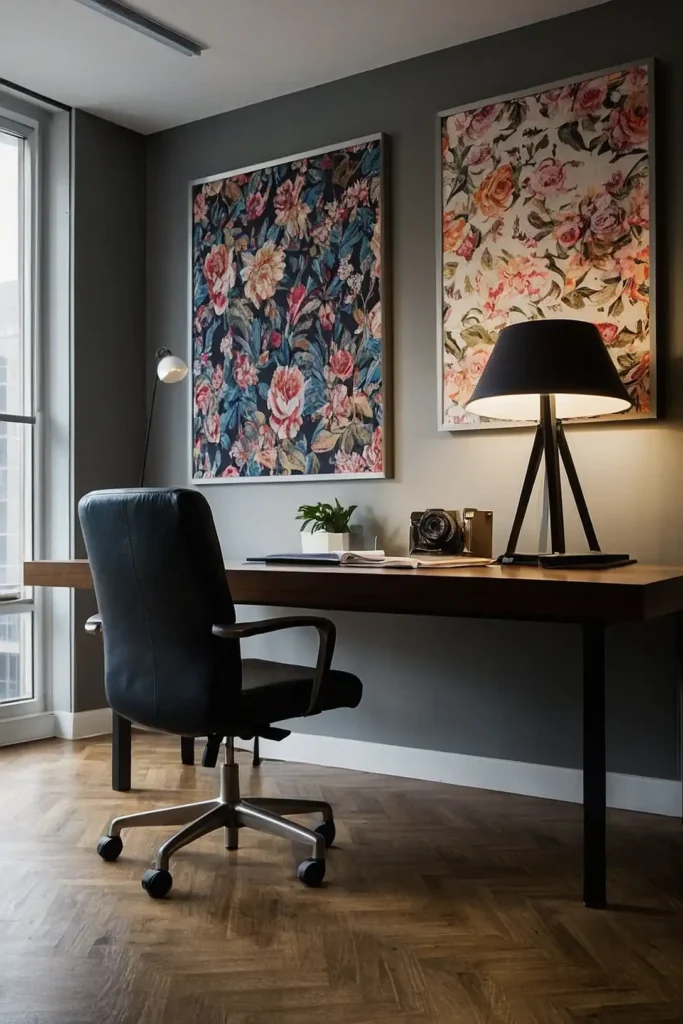
Transform boring cubicle walls with removable fabric panels, tapestries, or framed artwork that inspires you.
Choose images that energize you or bring a sense of calm depending on your work needs.
Secure artwork using damage-free hanging solutions approved by your office.
Group smaller pieces together for greater visual impact.
Surrounding yourself with images you love creates focal points that draw the eye away from utilitarian office elements.
6: Upgrade Your Desktop Background

Select a desktop wallpaper that coordinates with your physical cubicle decor.
This often-overlooked detail creates cohesion between your digital and physical workspaces.
Choose images that energize and inspire without being too distracting.
Consider rotating seasonal images to keep your environment fresh throughout the year.
Since you spend hours looking at your screen, this zero-cost enhancement significantly impacts your daily visual experience.
7: Incorporate Natural Elements
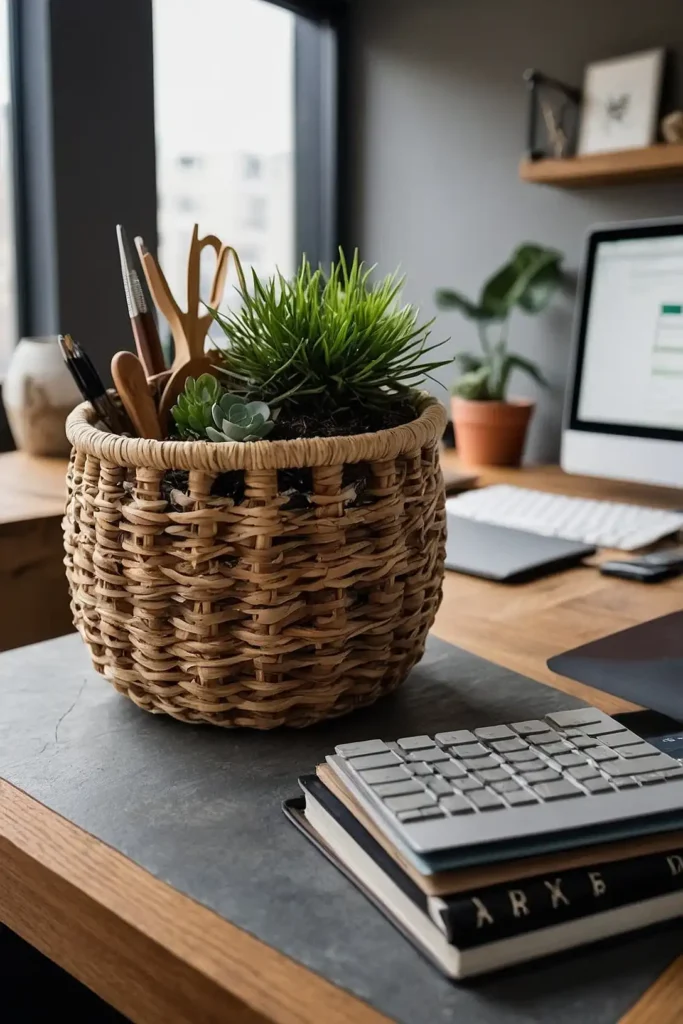
Bring organic materials into your workspace through wood desk accessories, stone paperweights, or woven baskets.
These elements create tactile contrast to the synthetic cubicle materials.
Choose items with interesting textures that feel satisfying to touch.
Position natural elements where you can see and interact with them regularly.
These grounding objects create subtle connections to the natural world that can reduce stress during hectic workdays.
8: Use Decorative Storage Solutions
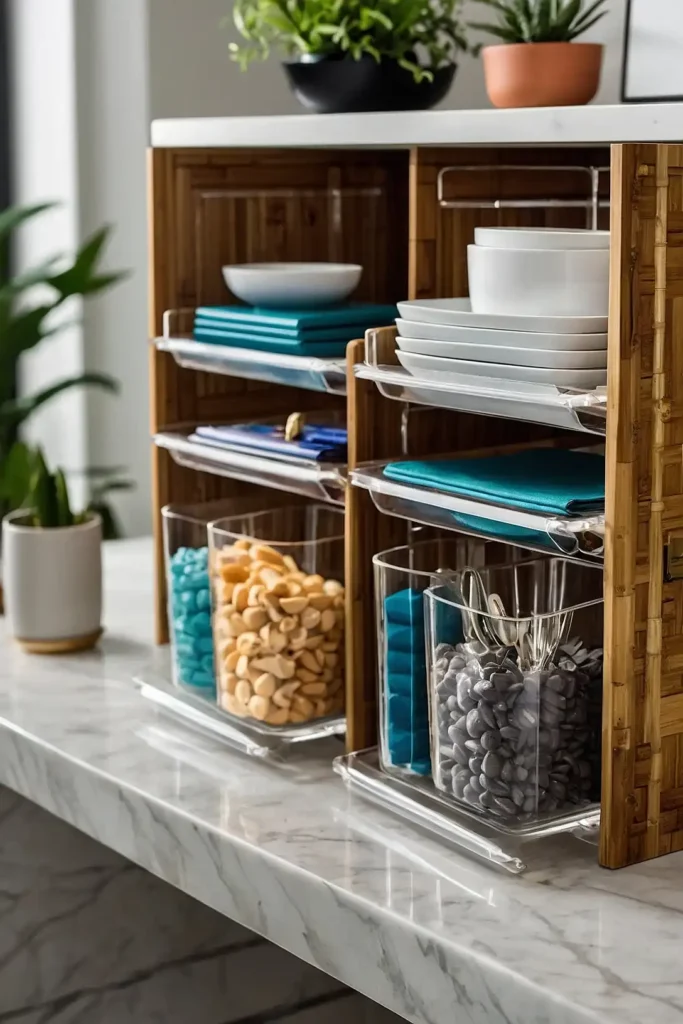
Replace standard-issue plastic organizers with beautiful alternatives in bamboo, ceramic, or colorful acrylic.
These functional pieces double as decorative elements that elevate your space.
Choose containers that complement your color scheme while accommodating your specific storage needs.
Use varying heights and textures to create visual interest.
This practical approach ensures that even utilitarian items contribute to your overall aesthetic rather than detracting from it.
9: Define Your Space with a Rug

Anchor your cubicle with a small area rug that adds color, pattern, and texture underfoot.
This unexpected addition instantly creates a more defined and personalized territory.
Choose low-pile options that won’t interfere with chair movement. Select materials that can withstand daily wear and occasional cleaning.
Beyond aesthetics, a rug absorbs sound and adds warmth, making your cubicle feel more like a purposeful space than a temporary workstation.
10: Create an Inspiration Board
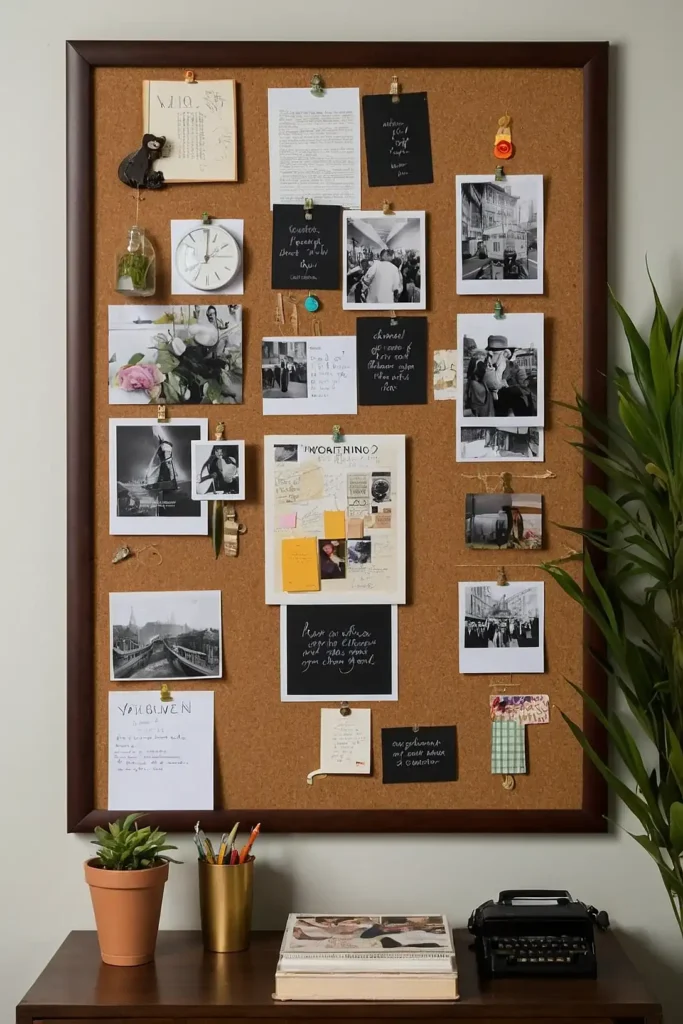
Dedicate one section of wall space to an ever-changing display of inspiration, whether through a traditional corkboard, magnetic surface, or wire grid system.
Curate a collection of quotes, images, and mementos that motivate you.
Refresh the contents periodically to prevent visual fatigue.
This dynamic element brings personality to your workspace while providing constant visual reminders of your goals and sources of inspiration.
11: Add Soft Textiles

Incorporate fabric elements through a small throw blanket over your chair, a cushion, or fabric-covered bulletin boards.
These soft touches immediately warm up the hard surfaces of standard office furniture.
Choose machine-washable materials that maintain their appearance over time.
Select textures that provide sensory comfort during stressful workdays.
These thoughtful additions transform utilitarian spaces into more human-centered environments that acknowledge comfort as a component of productivity.
12: Install Better File Organization

Replace basic manila folders with a color-coded filing system that makes information retrieval effortless while adding visual harmony to your workspace.
Choose folders and labels that complement your overall color scheme.
Consider decorative magazine files for materials you reference frequently.
This functional improvement creates a more efficient workflow while contributing to the intentional design of your personal workspace.
13: Use Desk Accessories as Decor

Select desk organization tools that serve double-duty as decorative elements.
Copper paper trays, marble pencil cups, or brass staplers elevate necessary items to design statements.
Choose pieces with clean lines and quality materials that won’t look cluttered.
Limit your selection to items you use regularly to maintain a streamlined appearance.
This approach ensures that even the most utilitarian objects contribute to your overall aesthetic rather than detracting from it.
14: Display Meaningful Photos Thoughtfully
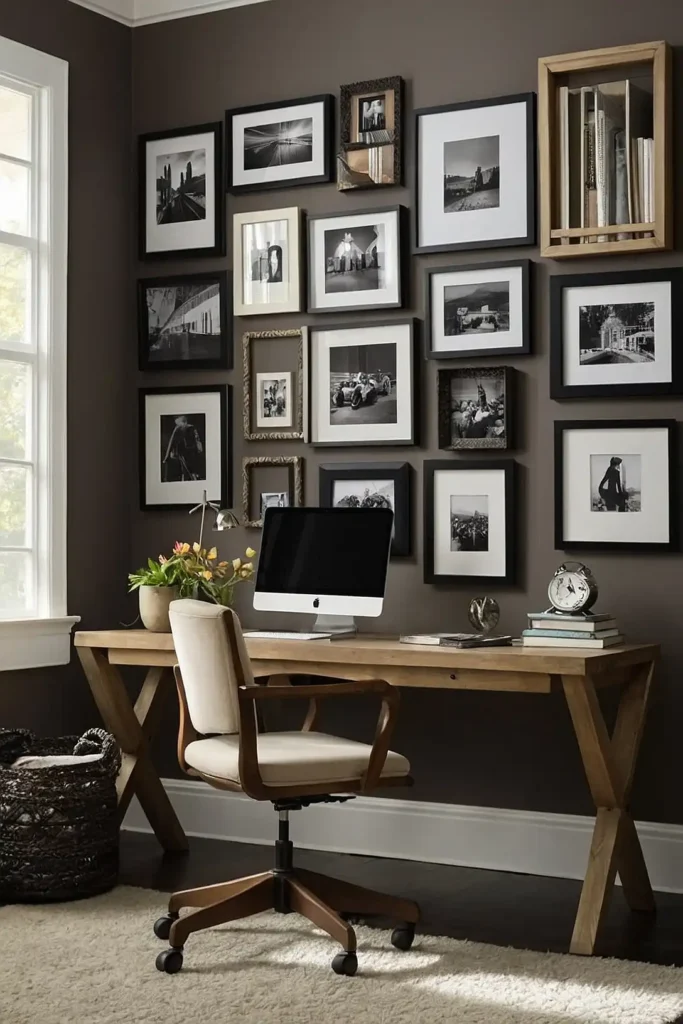
Curate a small selection of personal photos in coordinating frames rather than plastering every surface with images.
This restrained approach maintains professionalism while personalizing your space.
Choose frames that complement your color scheme.
Group photos together in one area rather than scattering them throughout your cubicle.
This intentional display creates a meaningful focal point without overwhelming your workspace with personal elements.
15: Add Subtle Scent Elements

Introduce gentle scents through a small essential oil diffuser, drawer sachets, or scented erasers. Choose subtle fragrances that promote focus without disturbing colleagues.
Select scents known to enhance productivity, like rosemary, lemon, or peppermint.
Keep all scent elements understated and be mindful of coworkers with sensitivities.
This sensory addition creates an invisible layer of personalization that can positively impact your mood throughout the workday.
16: Use Decorative Screen Savers
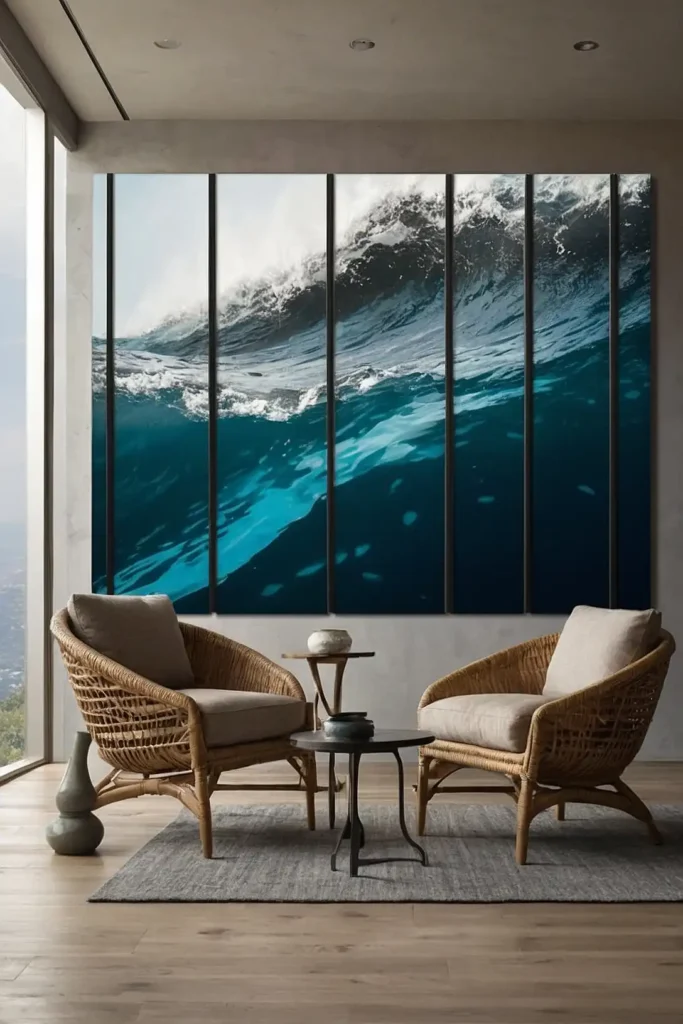
Set up a rotating gallery of beautiful images as your screen saver.
This creates an ever-changing visual element that refreshes your space without requiring physical changes.
Choose images that align with your interests or aesthetic goals.
Consider nature scenes, architectural details, or abstract patterns that coordinate with your decor.
This digital decoration transforms your dormant computer into a dynamic art display that energizes your workspace.
17: Incorporate Multi-Functional Furniture

Add a small storage ottoman or folding shelf that provides extra surface space when needed. These versatile pieces maximize your limited cubic footage.
Choose items that tuck neatly under your desk when not in use.
Select designs that complement your overall aesthetic while serving practical purposes.
These adaptable elements create flexibility within your fixed space, allowing your cubicle to better accommodate your changing needs throughout the workday.
18: Create Visual Division with Plants

Position taller plants strategically to create natural privacy screens without building wall-like barriers.
This green boundary defines your space while maintaining an open feel.
Choose plants with appropriate heights for your desired level of division. Arrange them in attractive containers that complement your color scheme.
This living barrier subtly establishes your territory while contributing to improved air quality and workplace wellbeing.
19: Display Functional Art
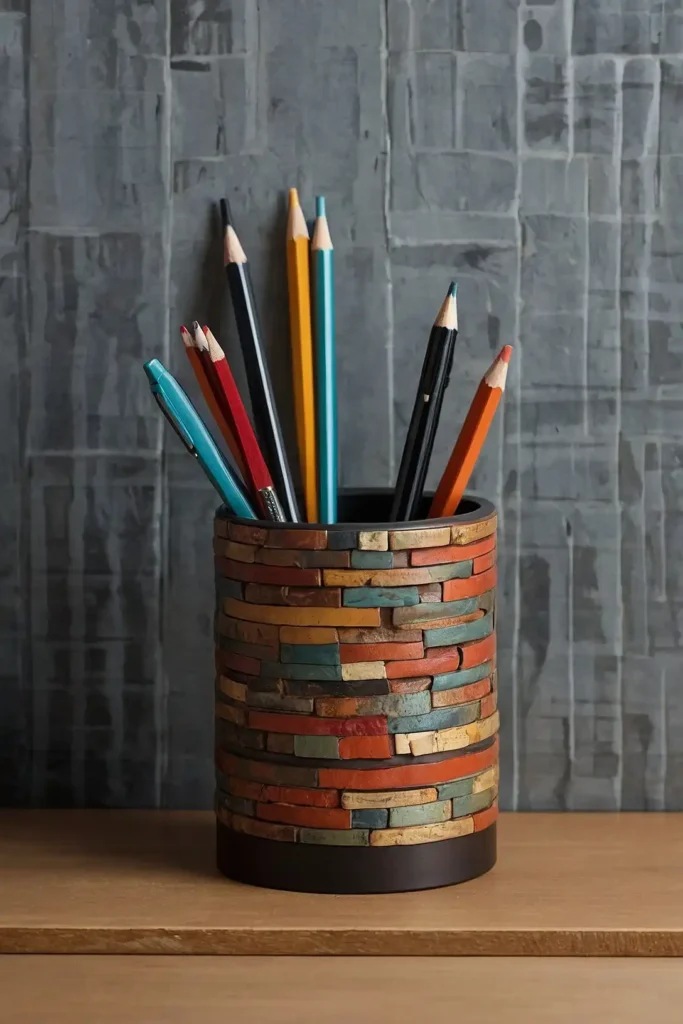
Select items that serve both practical and aesthetic purposes, like a beautiful wall calendar, artistic mouse pad, or decorative pencil cup.
These pieces add visual interest while earning their keep.
Choose functional art that reflects your personal style. Position these items where they can be both useful and visible as part of your decor.
This dual-purpose approach ensures that every element in your limited space contributes maximum value to your work environment.
20: Use Decorative Hooks and Clips
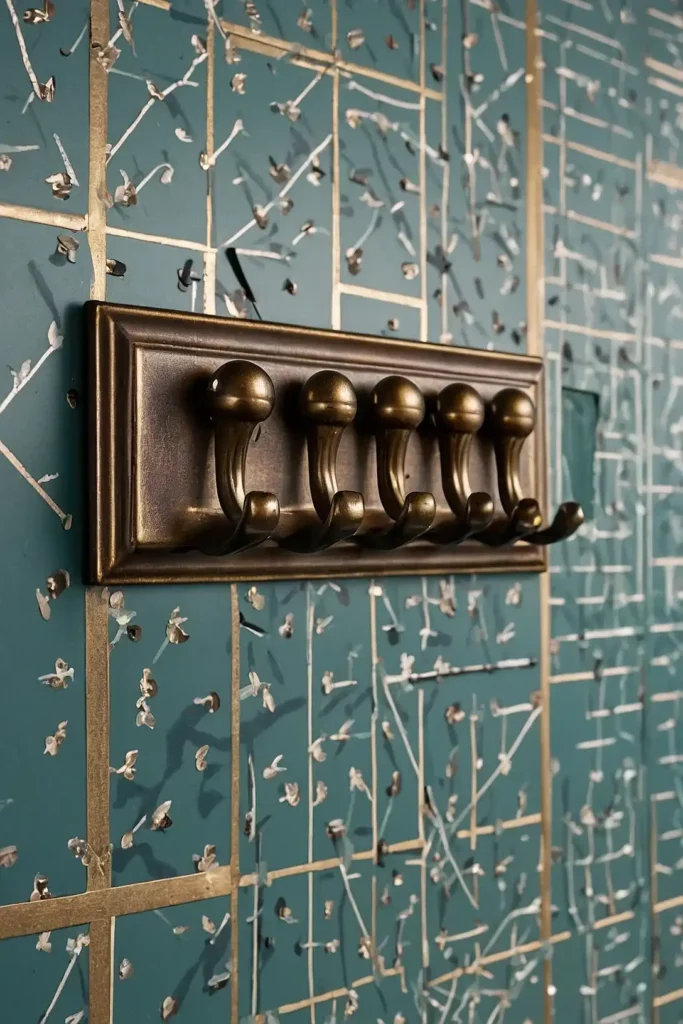
Replace standard thumbtacks and pushpins with decorative versions that add unexpected detail to bulletin boards and walls.
These small touches demonstrate attention to detail.
Choose clips and hooks in metallic finishes or colors that complement your scheme.
Use them consistently throughout your cubicle for a cohesive look.
These tiny style statements transform utilitarian elements into intentional design details that elevate your overall space.
21: Add Architectural Interest with Wallpaper
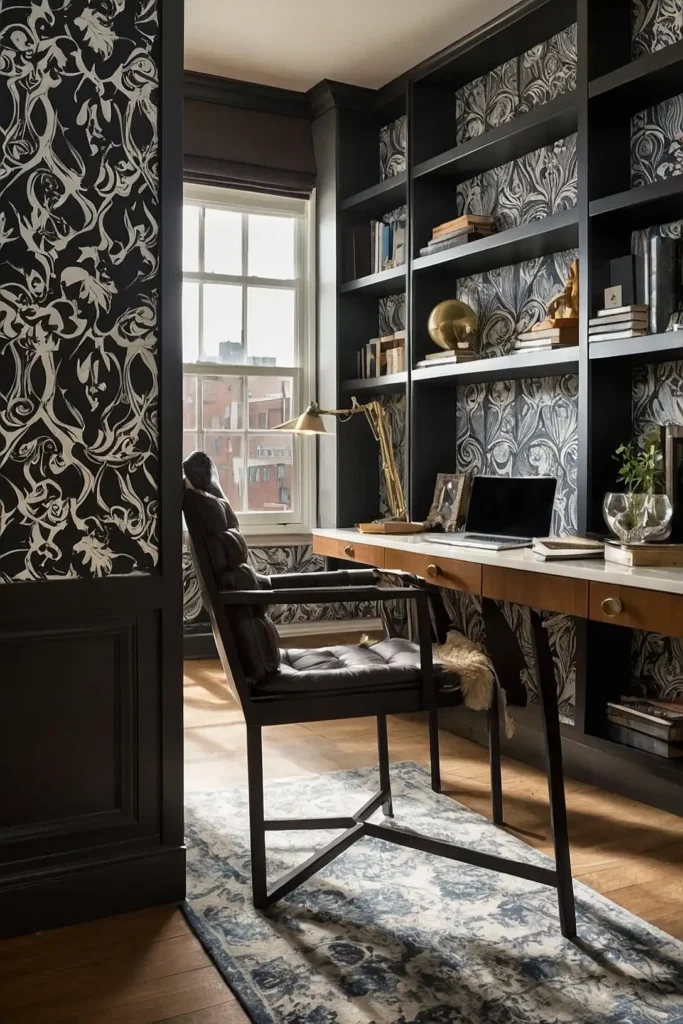
Apply removable wallpaper to the inside of shelves, the back of your cubicle, or as frame-like borders. This unexpected addition creates depth and visual interest.
Choose patterns that complement your color palette without overwhelming the space.
Apply wallpaper strategically as an accent rather than covering every surface.
This architectural enhancement adds personality and dimension to standard-issue workspaces without permanent changes to company property.
22: Install Under-Shelf Lighting

Add battery-operated LED strip lights under shelves or cabinets to create warm ambient lighting that counteracts harsh fluorescents.
This unexpected addition creates a more inviting atmosphere.
Choose warm white lights rather than cool blue tones.
Position them where they’ll highlight decorative elements without causing screen glare.
This lighting layer transforms the feeling of your cubicle, especially during dark winter afternoons or in windowless office environments.
23: Create Digital-Free Zones

Designate one area of your desk as a tech-free space with analog tools like a beautiful notebook, quality pens, or an inspiring book.
This intentional boundary promotes mental breaks.
Choose tools with aesthetic appeal that you genuinely enjoy using.
Position this zone where you can easily transition to it during digital overwhelm.
This thoughtful division creates balance in your workspace while acknowledging the importance of occasional disconnection for creativity and mental clarity.
24: Use Vertical Space Effectively
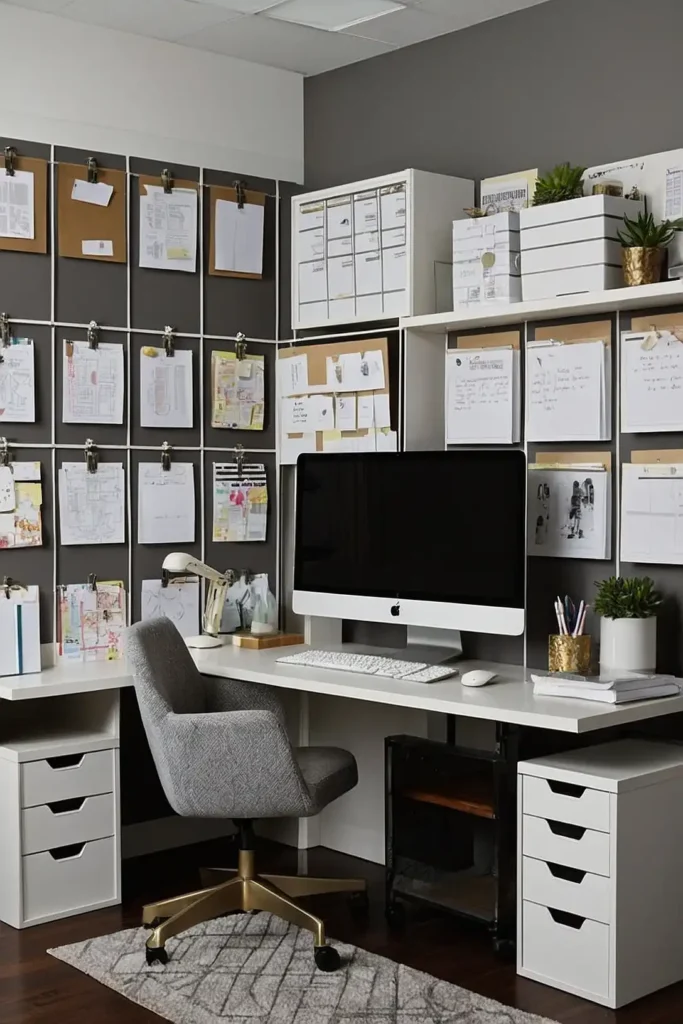
Install wall pockets, hanging organizers, or magnetic strips to utilize vertical surfaces for storage and display.
This strategy frees up valuable desk space while creating visual interest.
Choose vertical elements that complement your decorative scheme. Arrange items at varying heights to create dynamic visual movement.
This dimensional approach maximizes your limited square footage while creating a more architecturally interesting environment.
25: Add a Small Mirror

Position a decorative mirror strategically to reflect light and create the illusion of more space. This unexpected addition serves both practical and aesthetic purposes.
Choose a frame style that complements your overall design.
Position your mirror where it won’t reflect computer screens or create awkward sightlines with colleagues.
Beyond checking your appearance before meetings, mirrors bounce light around your cubicle, making the space feel larger and more open.
26: Incorporate Seasonal Elements

Refresh your cubicle with subtle seasonal touches that prevent decorative fatigue.
Swap out small elements like paperweights, mouse pads, or artwork quarterly.
Choose season-appropriate colors and textures that coordinate with your permanent pieces.
Keep seasonal elements sophisticated rather than cutesy for professional environments.
These periodic refreshes create a dynamic environment that evolves throughout the year, preventing the stagnation that can occur in permanent workspaces.
27: Create Welcome Vibes at the Entrance
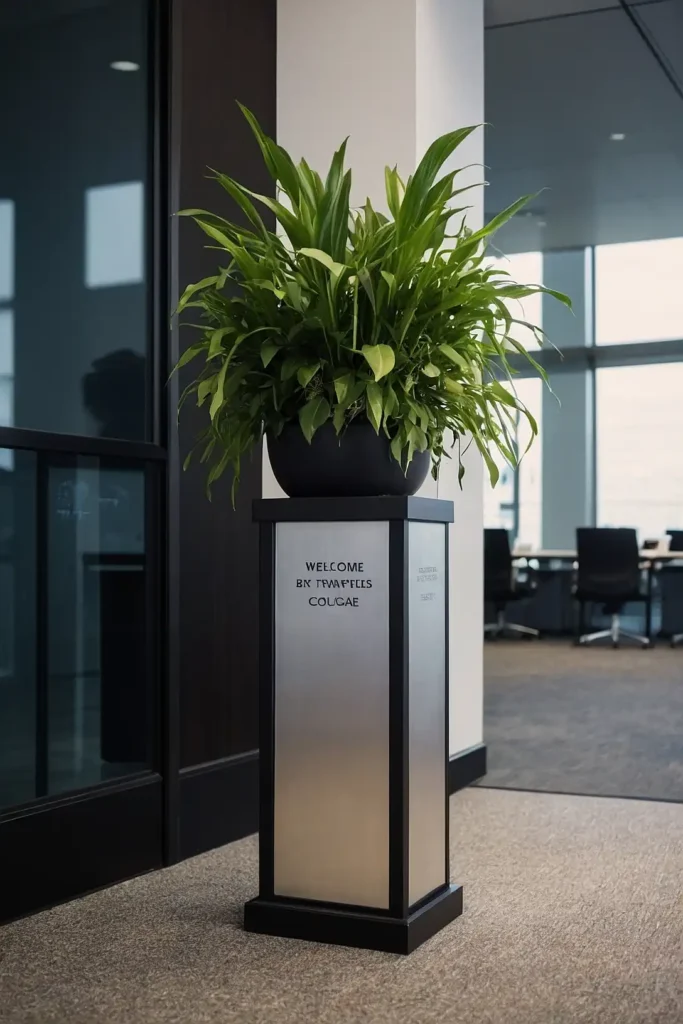
Define your cubicle entrance with a small welcome element like a decorative nameplate, tiny plant, or interesting object.
This threshold marker sets the tone for your space.
Choose items that hint at your personality while maintaining professionalism.
Position them where they’re visible to passersby without obstructing traffic flow.
This thoughtful detail creates a transition point between public office space and your personalized territory, subtly communicating ownership of your workspace.
Conclusion
Your cubicle might be standard-issue, but your experience working in it doesn’t have to be.
With these decorating strategies, you’ll create a workspace that energizes your productivity while reflecting your unique personality and professional goals.







